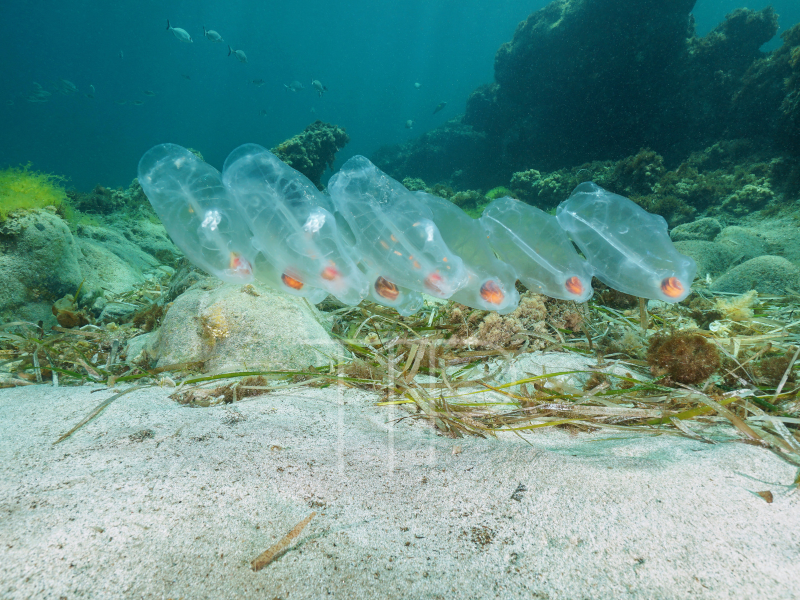Salps, found these weeks on Portuguese shores, look alien, but are helping our oceans.
Don’t be alarmed if you go to the Algarve in the next few weeks and find some “gelatinous, transparent bugs” on the sand of your favorite beach. They’re not jellyfish or dangerous, but they look like props from a science fiction movie. They’re actually salps, the name given to a group of species belonging to the Salpidae family.
Few people know about these fantastic creatures. They can measure millimeters, but at the same time, they can grow at around five percent per hour, ending up approximately ten centimeters long.
The only danger? Annoying fishermen. After all, salvas weigh down nets, but they are not edible or sold. It’s also common for them to wash ashore, something that is currently happening in the Algarve. In the past, the same thing happened at Foz do Arelho, in the Caldas da Rainha area.
Salps have a very short lifespan. They survive between two weeks and three months before being eaten by fish such as mackerel and tuna. They can also fall slowly to the bottom of the sea, with large quantities of the species then gathering in the ocean.
They move by pumping water through their gelatinous bodies and usually gather in rows that can reach a kilometer in length. They may seem like passive creatures, but they play a fundamental role for humanity. They feed on phytoplankton, which absorbs carbon dioxide. Each day they can absorb around four thousand tons of CO2.
Salps are non-selective filter feeders eating everything that they trap in their feeding net. Although the mesh of their feeding net is efficient enough to catch a variety of different sizes of particles from bacteria to larva, their main food is phytoplankton.
Interesting read on Wiki: Salp
Related article: Resolution creating Algarve Reef Marine Park published in DR

